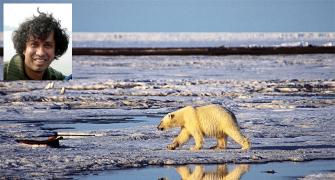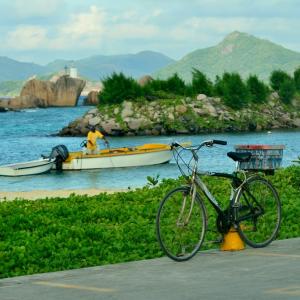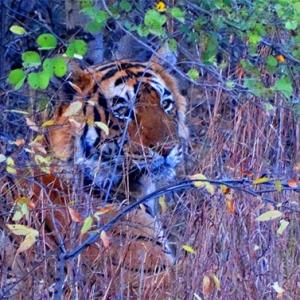These natural wonders are all under threat.
After months of suffering, the world's last male northern white rhino was put to sleep earlier this week, after age-related complications.
His death is a reminder of the natural beauty the world is losing at a rapid pace.
Today, we take a look at 10 of the many natural wonders to experience before they disappear forever.
1: The Northern White Rhino in Kenya
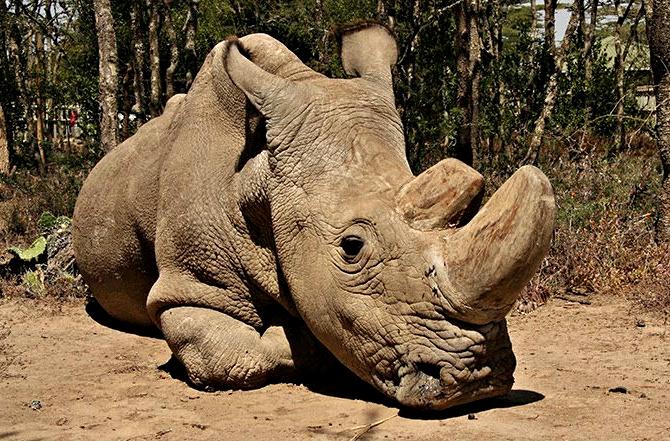
Najin (left) and her daughter Patu, the last two northern white rhino females.
Photographs: Baz Ratner/Reuters
The last of the northern white rhinos -- one male named Sudan and two females named Najin and Patu -- live at the Ol Pejeta Conservancy in Laikipia National Park in Kenya.
Conservationists and scientists are working on a way to try the IVF route to save the sub-species from extinction, largely caused by indiscriminate poaching for rhino horns, but the London-based Save the Rhino is not optimistic.
The organisation said on its website, 'With small chance of healthy new calves, and limited place in their historic range to go, Save the Rhino believes that the best outcome will be to put our efforts and funding -- including research into IVF -- into saving the species, which do still have a chance.'
Jo Shaw, African rhino expert with the WWF conservation group, told the Associated Press, 'The real fight for the survival of northern white rhinos in their natural habitat was lost over a decade ago.'
Ol Pejeta also boasts one of the largest black rhino sanctuaries and the Sweetwaters Chimpanzee Sanctuary, which is the only place in Kenya where these great apes can be seen; it is also home to the 'big five game' among a large selection of other African animals, making it a very popular safari destination.
2: The Belize Barrier Reef in Belize
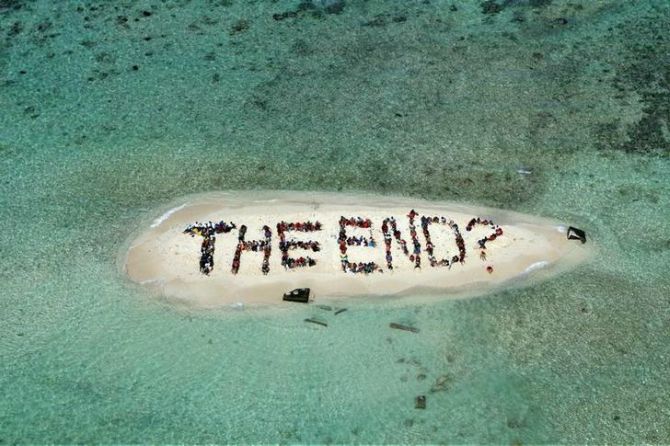
Photograph: Lou Dematteis/Reuters.
Most of the world's great barrier reefs, including the biggest in Australia, are dying due to climate change, but the Belize Barrier Reef is on UNESCO's list of World Heritage sites in danger.
Located on the coast of Belize in Central America, UNESCO calls it 'an outstanding natural system consisting of the largest barrier reef in the northern hemisphere, offshore atolls, several hundred sand cays, mangrove forests, coastal lagoons and estuaries.'
It is a 300-km long section of the 900-km long Mesoamerican Barrier Reef System, which stretches continuously from Cancún to Honduras.
3: Tropical rain forests of Indonesia
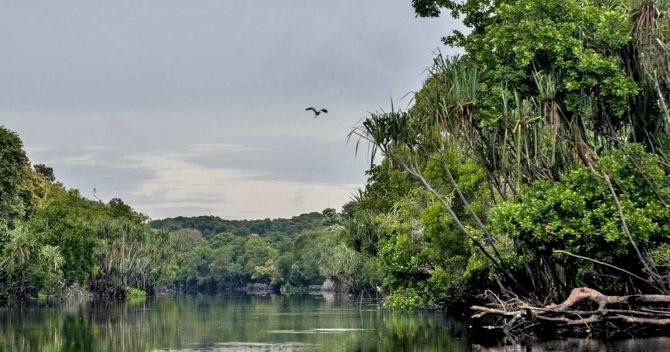
Photograph: Ulet Ifansasti/Getty Images.
The 2.5 million hectare Tropical Rainforest Heritage of Sumatra site comprises three national parks: Gunung Leuser National Park, Kerinci Seblat National Park and Bukit Barisan Selatan National Park.
It has been on the UNESCO's endangered sites list since 2011. Yet, deforestation continued unchecked with Indonesia ending up with the highest rate of deforestation in 2014.
According to UNESCO, this protected area is home to an estimated 10,000 plant species, including 17 endemic genera; more than 200 mammal species; and some 580 bird species of which 465 are resident and 21 are endemic. Of the mammal species, 22 are Asian, not found elsewhere in the archipelago and 15 are confined to the Indonesian region, including the endemic Sumatran orangutan and Sumatran tiger.
4: Everglades of the United States
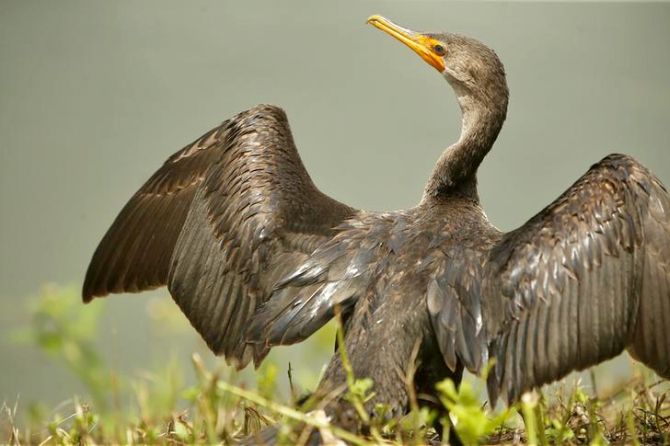
Photograph: Jonathan Ernst/Reuters.
The Everglades of Florida have been on the UNESCO endangered list since 2010.
Located at the southern tip of Florida, this site has been called 'a river of grass flowing imperceptibly from the hinterland into the sea'. The exceptional variety of its water habitats has made it a sanctuary for a large number of birds and reptiles, as well as for threatened species such as the manatee.
According to UNESCO, it also contains the largest mangrove ecosystem in the Western Hemisphere, the largest continuous stand of sawgrass prairie and the most significant breeding ground for wading birds in North America.
5: Islands of Lakshadweep
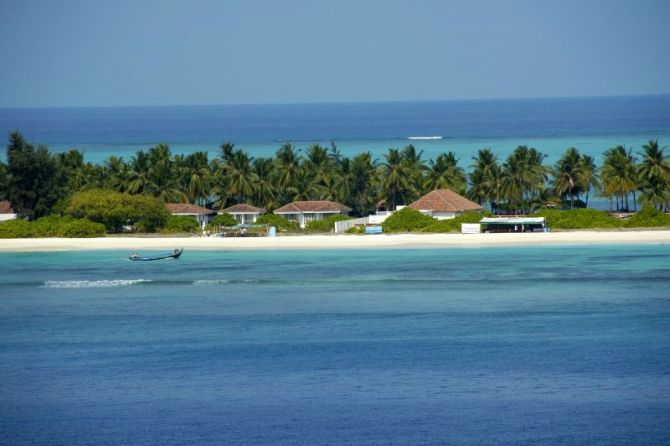
Photograph: Wikimedia Commons.
As of last year, Lakshadweep is no longer an archipelago of 36 islands. One of its biodiversity-rich uninhabited islands off the western coast of India vanished in 2017 due to coastal erosion, and according to studies, another four such territories in the sea are shrinking fast.
The Lakshadweep Archipelago, built by coral, forms a terrestrial ecoregion together with the Maldives and the Chagos. It is home to hundreds of species of fish and birds.
6: Glaciers in the United States

Photograph: Mario Tama/Getty Images.
The majority of the almost 50 large glaciers in Los Glaciares National Park have been retreating due to warming temperatures, according to the European Space Agency.
It is a story that is repeated across glaciers everywhere, including in the Himalayas.
7: Beaches of Seychelles
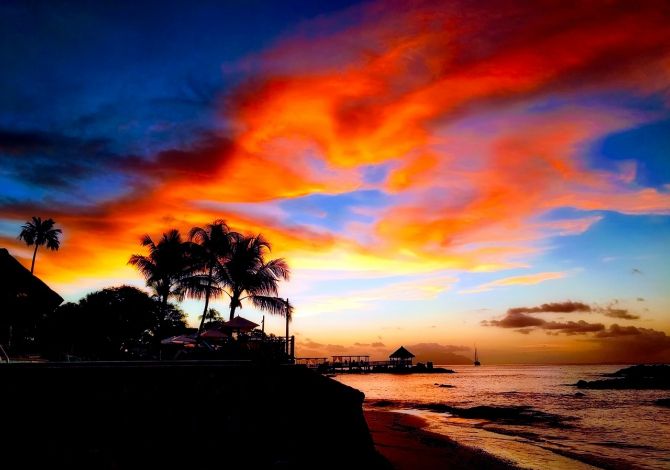
Photograph: Pixabay.com.
All the 115 islands in the Seychelles in the Indian Ocean are vulnerable to beach erosion, and if not cared for properly may completely disappear in 50 to 100 years, experts have warned.
Lisa Laporte Booyse, who runs a guesthouse on the southeast tip of Mahe, the largest island in the chain, told CNN some time ago, 'People that don't believe in climate change, maybe they need to come to the Seychelles. We can show them photos of things that were very different before ... coastal erosion. We can see flooding that we never experienced, the higher temperatures that we've never experienced before. The season(al) changes that have had an effect.'
8: Rainforests of Madagascar
Photograph: Radu Sigheti/Reuters.
The rainforests of the Atsinanana in Madagascar have been on the UNESCO endangered list since 2010.
These rainforests are spread across six national parks along the eastern part of the island. UNUESCO noted, 'Having completed its separation from all other land masses more than 60 million years ago, Madagascar's plant and animal life evolved in isolation. The rainforests are inscribed for their importance to both ecological and biological processes as well as their biodiversity and the threatened species they support. Many species are rare and threatened especially primates and lemurs.'
9: The national parks of Congo
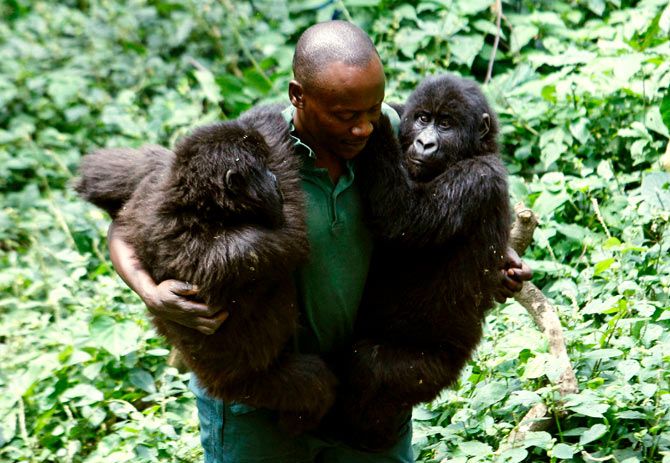
Photograph: Finbarr O'Reilly/Reuters.
All the national parks of Congo and their unique features have been endangered since the 1990s.
These parks are home to savannahs, grasslands, woodlands, extinct volcanos, swamps, steppes, snowfields, rainforests and more.
They also host a spectacular number of species, including mountain gorillas, hippopotamuses, elephants, chimpanzees, black and white rhinos, and giraffes.
One of the biggest threats to Congo's natural wonders are war and oil exploration.
10: The ice cap of Mt Kilimanjaro in Tanzania

Photograph: Chris Jackson/Getty Images.
If you want to see Mt Kilimanjaro the way Ernest Hemingway described it in The Snows of Kilimanjaro (1936), don't wait to long.
The ice cap, which is special because of its unique location near the Equator, has shrunk by about 80 percent since then and is still melting away.
Some estimates say that, at current rates, the glacier could melt completely by 2020.



